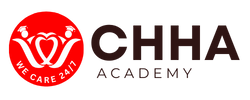
Introduction
Embarking on a career as a home health aide is both exciting and rewarding. Your first day is all about setting the tone for your future interactions with clients and families. To help you start on the right foot, we’ve compiled a comprehensive checklist that covers everything you need to prepare for your new role.
Pre-Arrival Preparations
Before stepping into your client’s home, take these steps to ensure you’re ready:
- Review Client Information: Familiarize yourself with the client’s medical history, care plan, and any special instructions.
- Plan Your Route: Use a reliable GPS or map application to plan the quickest route to the client’s home, allowing extra time for potential traffic.
- Prepare Your Bag: Pack essentials such as gloves, hand sanitizer, notepad, and pens. Don’t forget your ID badge and any required documentation.
- Dress Appropriately: Wear clean, comfortable attire that adheres to healthcare standards and includes non-slip footwear.
First Impressions Matter
Greet with Confidence
Your initial interaction sets the stage for a trusting relationship. Arrive on time and greet the client and their family with a warm, friendly smile.
- Introduce Yourself: Clearly state your name and role. It helps to offer a short background about your experience in home health aiding.
- Show Empathy: Be attentive and listen actively to any concerns the client or family might express.
Tour the Home
Understanding the layout of the client’s home is essential for efficient care delivery.
- Emergency Exits and Equipment: Identify all exits and locate necessary equipment like fire extinguishers and first aid kits.
- Safe Paths: Note any potential hazards or obstacles in high-traffic areas.
Reviewing Care Plans
After introductions, take some time to go over the client’s care plan.
- Discuss with Supervisors: Ensure you understand each part of the plan by discussing it with your supervisor or a senior colleague when needed.
- Clarify Questions: If any part of the care plan is unclear, ask for clarification immediately to avoid mistakes.
Communication is Key
Maintain Open Communication
Keeping open lines of communication with the client, their family, and your team is essential for effective care.
- Daily Briefings: Begin and end your day with briefings about observations and anything noteworthy.
- Document Everything: Keep detailed records of your interactions and care activities for transparency and accuracy.
Leverage Technology
Use apps and tools that facilitate efficient communication and task management, making your job more manageable and organized.
Adapting to the Role
Each client is unique, and flexibility is an essential attribute of a successful home health aide.
- Be Observant: Pay attention to changes in the client’s condition or environment that may impact their care needs.
- Stay Informed: Regularly update your knowledge on best practices in home health care.
Final Words of Encouragement
Transitioning into a new role as a home health aide can be daunting, but with preparation and a positive attitude, you can become an invaluable asset to your clients and their families. Remember, the impact you make is significant, and your dedication will shape the quality of care provided.






0 Comments